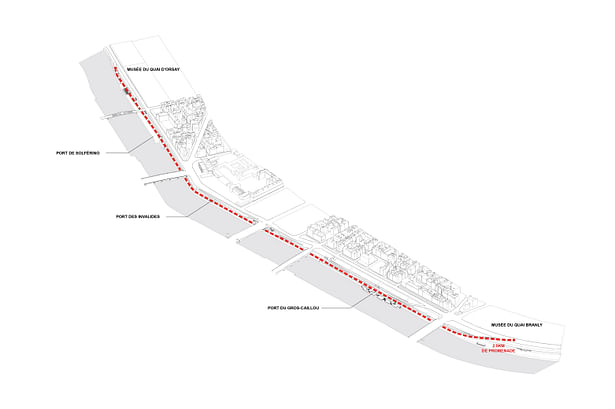
For more than 40 years, the road traffic created a break between the city and the river. The main objective of this shoreline development project on the banks of the Seine is not to offer new spaces, but rather to offer back – to the delight of Parisians and other city lovers – the ‘spaces regained’ and the wilderness experiences they offer beyond urbanity. This project explores how to escape the mundane whilst remaining in place, and how to rediscover Paris and see the banks of the Seine in a new light.
All over the world, cities try to meet the social and societal demand, which reclaims a role for nature in the city.
The project involves a dozen of municipal services and the challenge was to make up a new promenade for about 2.5km (1.6miles) that happens in the supposedly most complex and restrictive area in France:
-Two thirds of the length are listed as UNESCO World Heritage sites and are subject to the French PFRP (Plan for Flood Risk Prevention), then the installations must be designed so that they can be removed easily in 72 hours.
-The activity of three ports is layered over walkers, strollers, joggers, young cyclists and other users flows, but at any time on decision from the prefect, car traffic may be restored.
Taking up this challenge, the office designed shoreline installations that adapts to all seasons, able to reconcile sports, nature, leisure and culture, while anticipating the need to move these large elements at a reasonable cost. In the signature style of ‘Arte Povera’ – the project is simple, efficient and elegant.
Status: Built
Location: Paris, FR
Firm Role: Co-contractors Architects
Additional Credits: PROJECT MANAGEMENT
Representative Architects : Artevia
Co-contractors Architects : Franklin Azzi Architecture
Architects collaborators : Lille 3000, Carat Sport, Paul Armand Grether
Wood engineer : Jean-Louis Vigier
Landscapers : Stéphane Place
Graphic Designer : Change is Good
